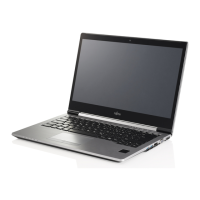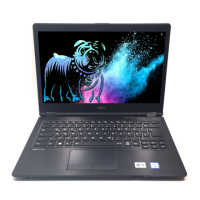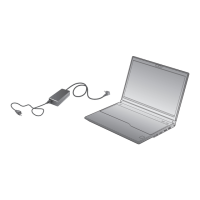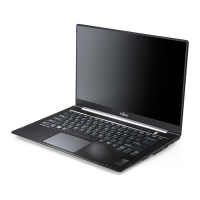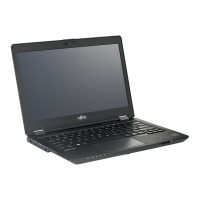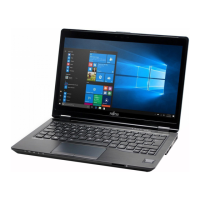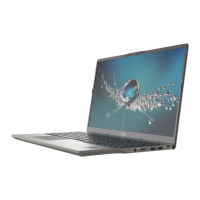24 25
Using Your LIFEBOOK
Function keys and key combinations
The following description of the function keys and key combinations applies to Windows
operating systems. Some of the functions described below may not work in other operating
systems and with some device drivers.
Other key combinations are described in the relevant manuals supplied with your application
programs.
If the key combination Fn + is pressed: instead of the pressing the keys directly,
you need to press and hold the Fn first and press the other function keys in the
combination in order to activate the key function.
F
BackspaceBackspace
Tabkey
EnterkeyReturnEnterLinefeed
ShiftkeyCapsLock
ShiftkeyShift
CursorkeysCursorcontrol
Windowskey
Backspace key
The Backspace key deletes the character to the left of the cursor.
Tab key
The Tab key moves the cursor to the next tab stop.
Enter key (return)
The Enter key terminates a command line. The command you have
enteredis executed when you press this key.
Caps Lock key
The Caps Lock key activates the Caps Lock mode, and the corresponding
icon is displayed in the Windows information area. In Caps Lock mode,
all of the characters you type appear in upper case. In the case of overlay
keys, the character printed on the upper left of the key will appear when
that key is pressed. To cancel the Caps Lock function, simply press the
Caps Lock key again.
Shift key
The Shift key causes uppercase characters to appear. In the case of
overlay keys, the character printed on the upper left of the key appears
when that key is pressed.
Fn key
The Fn key activates the Fn function of an overlay key
Cursor keys
The cursor keys move the cursor in the direction of the arrow, i.e. up,
down, left, or right.
Windows key
The Windows key switches between the start screen and the last used
application.
Menu key
The Menu key opens the menu for the active application.
Key Description
Backspace
Tap
Shift
Caps Lock
Enter

